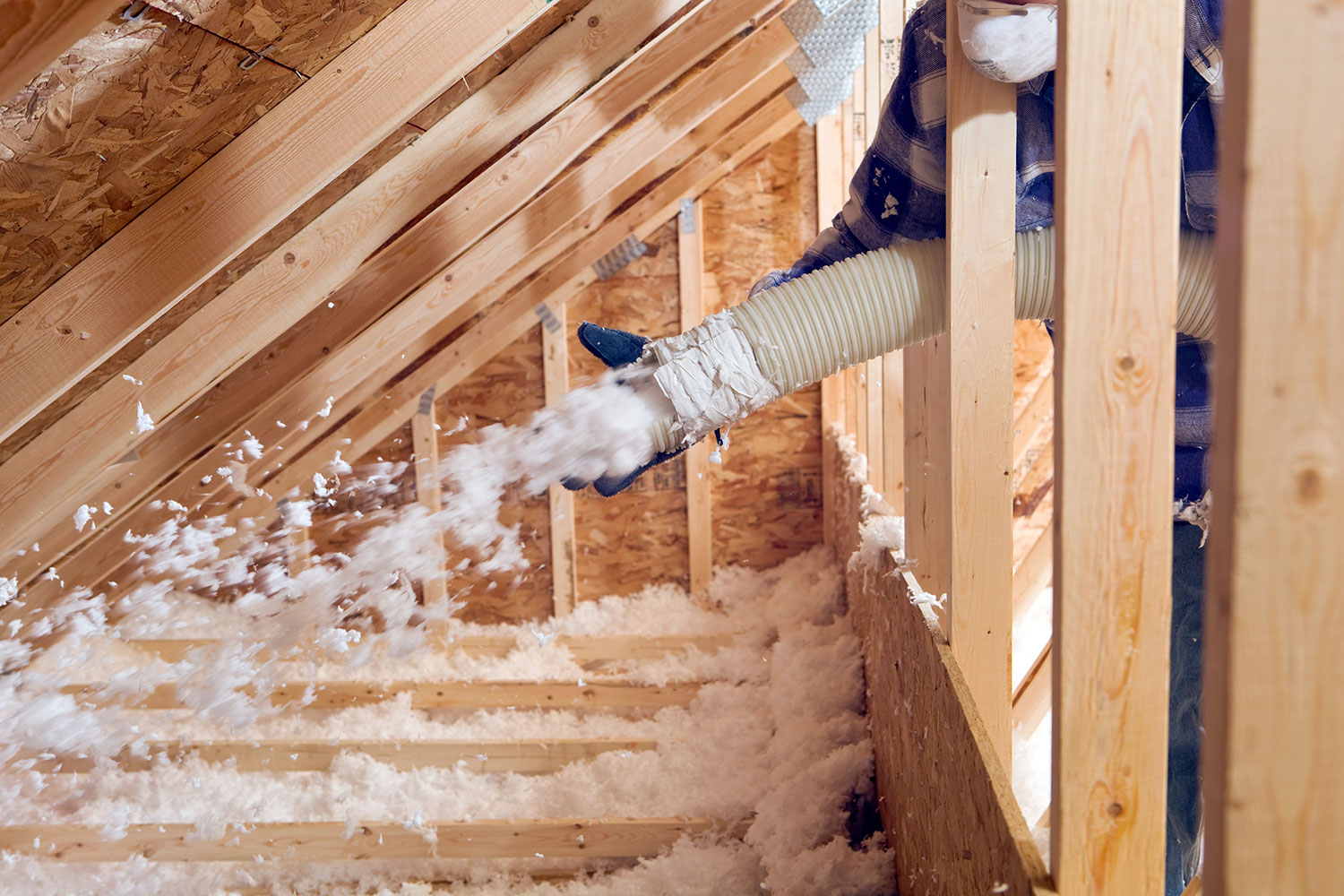
Blown-in wall insulation system in Massachusetts
If you’re looking for a high performance wall insulating system for use in new home construction or a remodeling project, the blown-in wall system may be your solution. Installing fiberglass batt insulation in an open wall cavity can leave gaps between the insulation and wall studs. This can compromise thermal resistance by allowing air to move behind batts. Blown-in wall insulation resolves this issue by providing a seamless, thermally efficient blanket that completely fills any void in a wall cavity.
Benefits of Blown-in wall insulation
Energy efficiency: Blown-in insulation does a better job of filling in spaces and gaps than rolled batting and creates a larger insulation blanket to help reduce energy loss. That energy efficiency can, in turn, translate to lower utility bills and a more comfortable home.
Noise reduction: In line with its ability to increase R-value, blown-in insulation can decrease sound bleed and help reduce noise that travels through your walls or down from the attic during a rainstorm.
If you need to upgrade insulation in your walls or attic or need insulation for a new home or business, our experienced technicians can help determine if blown-in insulation is the right choice for you.
Blown-in insulation can be used in a wide variety of applications, but one of the most beneficial uses is when dealing with existing walls that are already closed up. During construction of a home or business or during an extensive remodel, it can be easy to add fiberglass batt insulation while the walls are open. Once they’re closed, adding fiberglass batt insulation is not a viable option. Blown-in insulation offers the option to fill the space by blowing in fibers through a small hole, easily adding R-value to walls. Blown-in insulation is also ideal for attics because it settles in easily around obstructions and thoroughly fills the necessary space.


